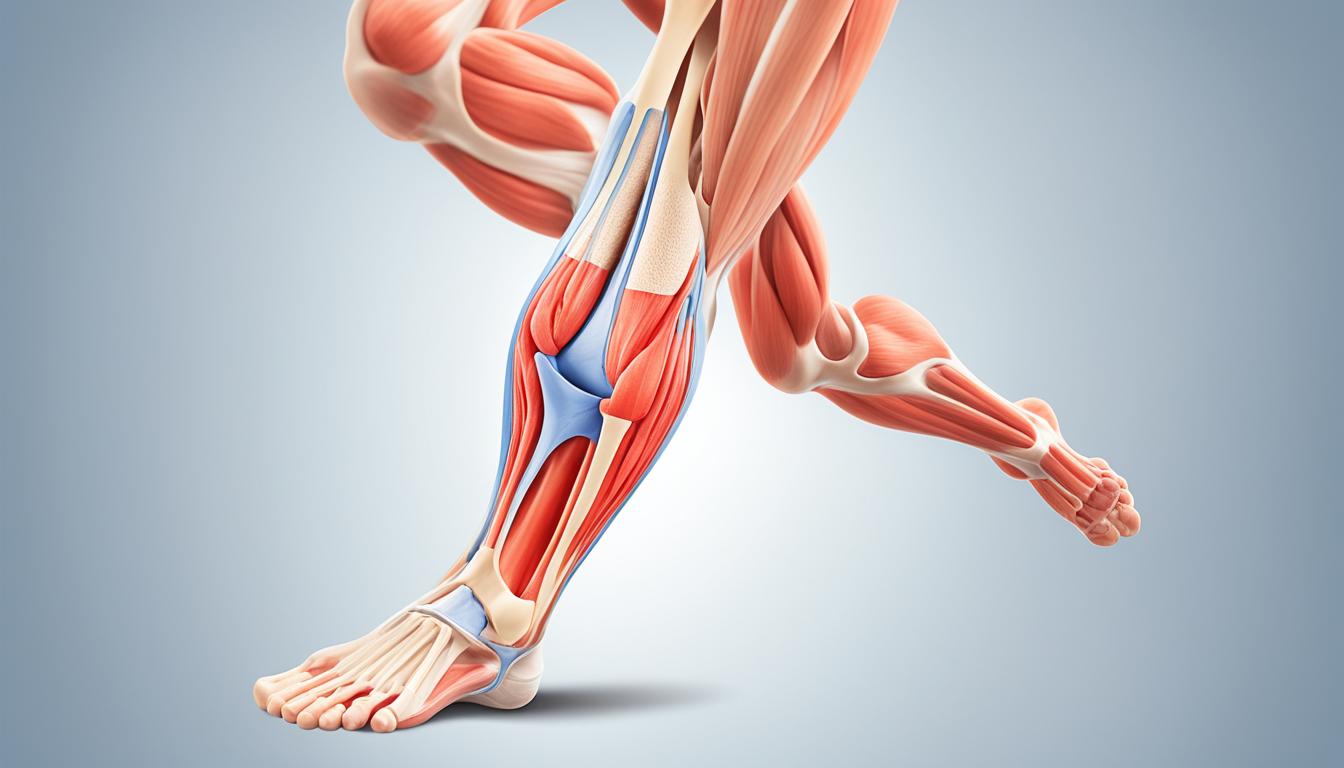Chronic compartment syndrome affects muscles and causes pain, cramping, or numbness. You might feel this when you exercise. These symptoms get better when you rest. It happens because the pressure inside muscle compartments goes up. Then, the flow of blood and oxygen lowers.
The exact cause of this syndrome is not clear. But, it’s often from doing the same motions a lot. This can happen with activities like running or cycling. Also, if you had leg injuries before, you might be at a higher risk.
Doctors diagnose this syndrome by checking your medical history, doing an exam, and measuring pressure in the compartments. They listen to what you say about your symptoms. Then, they check your muscles for tightness and pain. They might also use a special test to measure the pressure.
The best way to treat this syndrome depends on how bad it is. Doctors might recommend rest, therapy, or pain management at first. But, with serious cases, surgery might be the only option. This would help by reducing the pressure in the muscle compartments.
Stem cell therapy is a new way to treat chronic compartment syndrome. It uses stem cells to help your body heal. These cells are injected where you hurt. Then, they can help your body heal the area, lessen swelling, and maybe make the symptoms better.
Key Takeaways:
- Chronic compartment syndrome causes pain, cramping, or numbness in the affected muscles during exercise.
- Repetitive motions and certain risk factors, such as physical activity and previous leg injuries, are associated with the development of chronic compartment syndrome.
- Diagnosis involves a combination of medical history, physical examination, and compartment pressure measurement.
- Treatment options include conservative measures, such as rest and physical therapy, as well as surgical intervention in severe cases.
- Stem cell therapy is an emerging treatment option that aims to promote tissue healing and regeneration.
Types and Symptoms of Compartment Syndrome
Compartment syndrome affects muscles and nearby tissues. It causes high pressure in muscle areas. This happens in two main ways: acute and chronic exertional compartment syndrome.
Acute Compartment Syndrome
This is a sudden and serious issue usually caused by trauma. It leads to symptoms like severe pain, swelling, and noticeable tightness. The limb may feel numb too.
Surgery is often needed right away to release the pressure. Untreated, it can harm muscles and nerves permanently.
Chronic Exertional Compartment Syndrome
Athletes and those who repeat certain exercises often face this syndrome. It brings pain or cramps during exercise, plus numbness or weakness.
These problems are most common in the lower legs. They might go away with rest but come back when active. Getting a proper diagnosis and treatment is critical.
Causes, Risk Factors, and Prognosis of Compartment Syndrome
The exact reasons for compartment syndrome are still not clear. It seems to happen when there’s too much pressure in a part of the body. This can come from swelling, bleeding, or inflammation. Common things that lead to this are broken bones, using muscles too much, muscle injuries, and pressure on muscles for a long time.
Some factors make you more likely to get compartment syndrome. These include doing a lot of sports, being young, working in jobs that are very physical, and having health issues like diabetes or artery disease.
If not treated quickly, compartment syndrome can cause big problems and disability for a long time. This might include hurting muscles and nerves forever, parts of the body dying, and sometimes needing to cut off a limb. How well someone recovers depends on how bad it was and when they got help.
With the right treatment and getting better through rehab, many people bounce back fully. But sometimes even after the care, some issues might stick around. It’s very important for those with compartment syndrome to do what the doctors say to avoid problems again.

